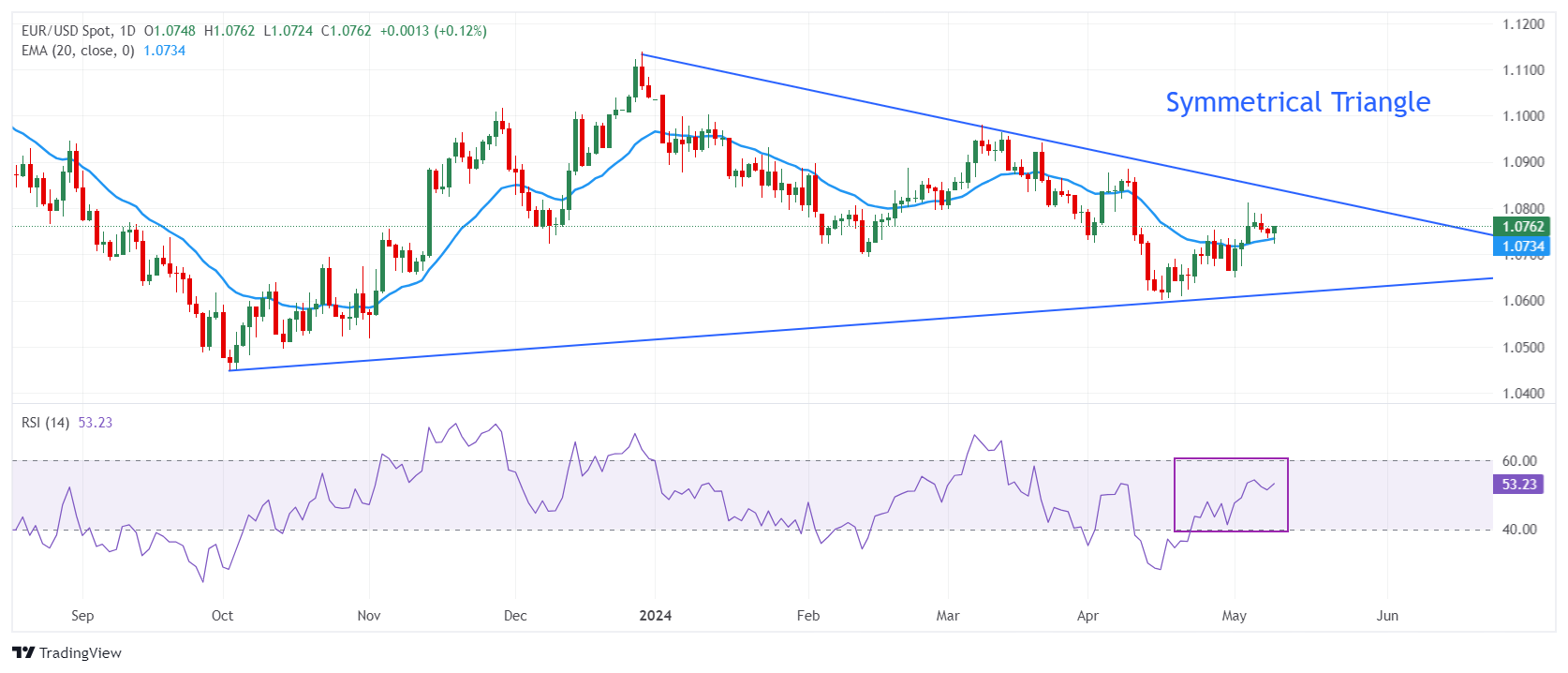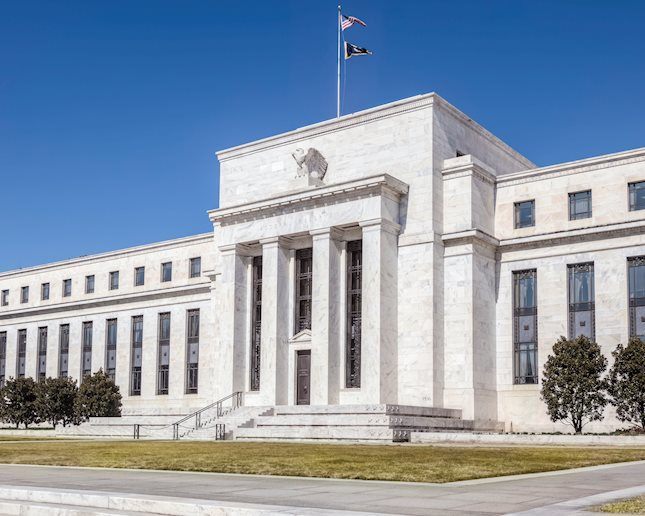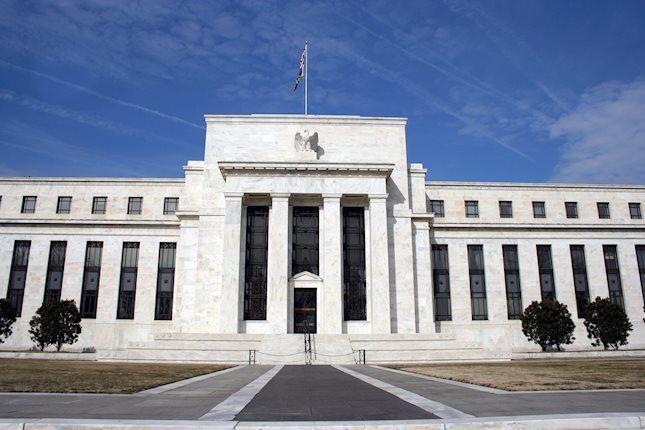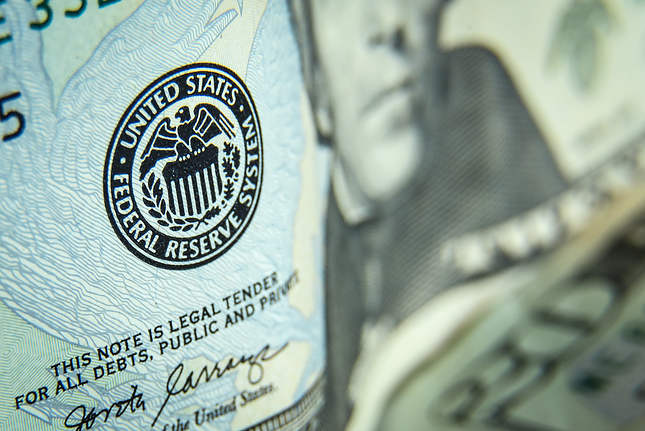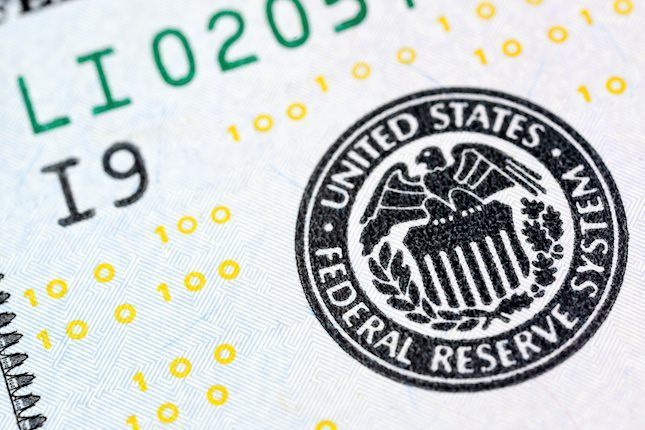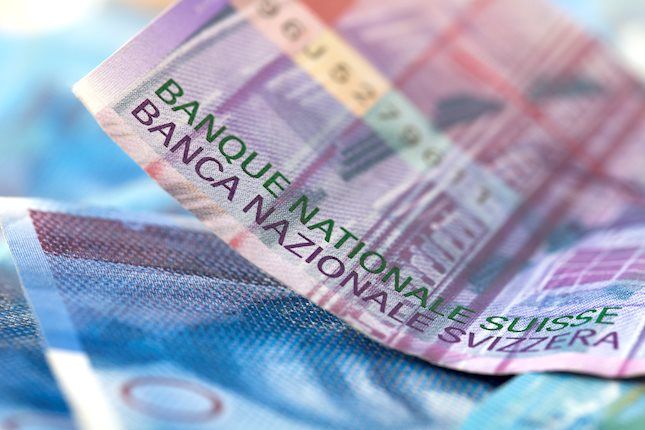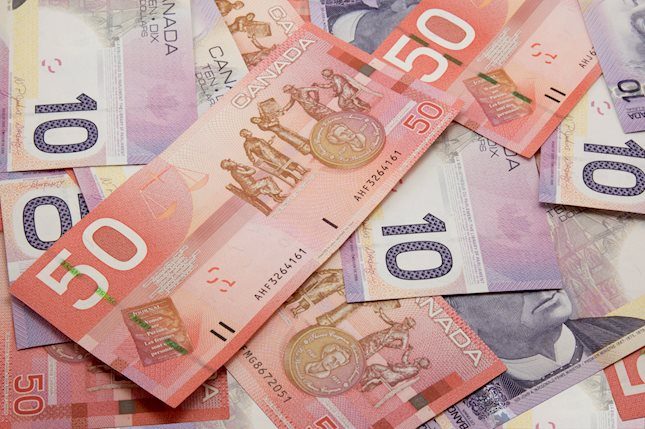EUR/USD strengthens as US Dollar falls back after weak Jobless Claims data
- EUR/USD delivers a sharp recovery to 1.0770 as the US Dollar slumps despite Fed’s hawkish interest-rate guidance.
- Fed’s Collins joins Kashkari to support keeping interest rates steady for a longer period.
- The ECB is expected to deliver three rate cuts this year.
EUR/USD discovers strong buying interest near 1.0730 in Thursday's early New York session. The major currency pair recovers even though speculation that the European Central Bank (ECB) will start lowering its interest rates in June remains firm. A sharp decline in the Eurozone inflation has allowed ECB policymakers to consider that prospect.
Most ECB policymakers also expect that the rate-cut cycle will continue beyond June as inflation is on course to return to the desired rate of 2%, and the service inflation doesn’t seem stubborn anymore. Services inflation softened to 3.7% in April after remaining steady at 4.0% for five straight months. Traders are pricing in three rate cuts by the ECB this year.
Contrary to the majority of ECB policymakers, who broadly agree over expectations of reducing interest rates from June, one of its Governing Council members and Governor of Austria's central bank, Robert Holzmann, said in Wednesday's early New York session that he doesn't see a reason to cut key interest rates "too quickly or too strongly," Reuters reported.
Daily digest market movers: EUR/USD extends recovery as US Dollar falls back
- EUR/USD recovers sharply from 1.0730 as the US Dollar comes under pressure after weak Initial Jobless Claims (IJC) data. For the week ending May 3, individuals claiming jobless benefits for the first time were higher at 231K than expectations of 210K and the prior reading of 209K, upwardly revised from 208K. Rising jobless claims have deepened fears of easing labor market conditions.
- Earlier, the US Dollar extends its upside as US Federal Reserve (Fed) policymakers maintaining hawkish guidance on interest rates. On Wednesday, Boston Fed Bank President Susan Collins favored interest rates remaining steady at their current levels until she gets greater confidence that inflation will sustainably return to the desired rate of 2%. Collins added “A slowdown in activity will be needed to ensure that demand is better aligned with supply for inflation to return durably.” Her comments indicated that the US economic outlook is strong even though interest rates remain higher for a longer period.
- Apart from Collins, Minneapolis Fed Bank President Neel Kashkari also remained lean towards maintaining the current interest rate framework as it is for the entire year. Kashkari remains concerned over stalling progress in inflation declining to 2% amid a strong housing market. When asked about an interest rate cut, Kashkari said weakness in the job market could justify it.
- This week, investors look at Fed speakers to project forward moves in the US Dollar due to the absence of top-tier US economic data. However, next week, the major trigger will be producer and consumer inflation data.. Hot inflation numbers would diminish prospects of rate cuts this year.
Technical Analysis: EUR/USD bounces back from 1.0730
EUR/USD halts its two-day losing streak on Thursday. The major currency pair finds support near the 20-day Exponential Moving Average (EMA), which trades around 1.0732, suggesting that strength in the near-term outlook is intact.
The shared currency pair exhibits a sharp volatility contraction due to a Symmetrical Triangle formation on a daily timeframe. The upward-sloping border of the triangle pattern is plotted from October 3 low at 1.0448 and the downward-sloping border is placed from December 28 high around 1.1140.
The 14-period Relative Strength Index (RSI) oscillates inside the 40.00-60.00 range, suggesting indecisiveness among market participants.
Economic Indicator
Initial Jobless Claims
The Initial Jobless Claims released by the US Department of Labor is a measure of the number of people filing first-time claims for state unemployment insurance. A larger-than-expected number indicates weakness in the US labor market, reflects negatively on the US economy, and is negative for the US Dollar (USD). On the other hand, a decreasing number should be taken as bullish for the USD.
Read more.Last release: Thu May 09, 2024 12:30
Frequency: Weekly
Actual: 231K
Consensus: 210K
Previous: 208K
Source: US Department of Labor
Every Thursday, the US Department of Labor publishes the number of previous week’s initial claims for unemployment benefits in the US. Since this reading could be highly volatile, investors may pay closer attention to the four-week average. A downtrend is seen as a sign of an improving labour market and could have a positive impact on the USD’s performance against its rivals and vice versa.
Forex News
Keep up with the financial markets, know what's happening and what is affecting the markets with our latest market updates. Analyze market movers, trends and build your trading strategies accordingly.

